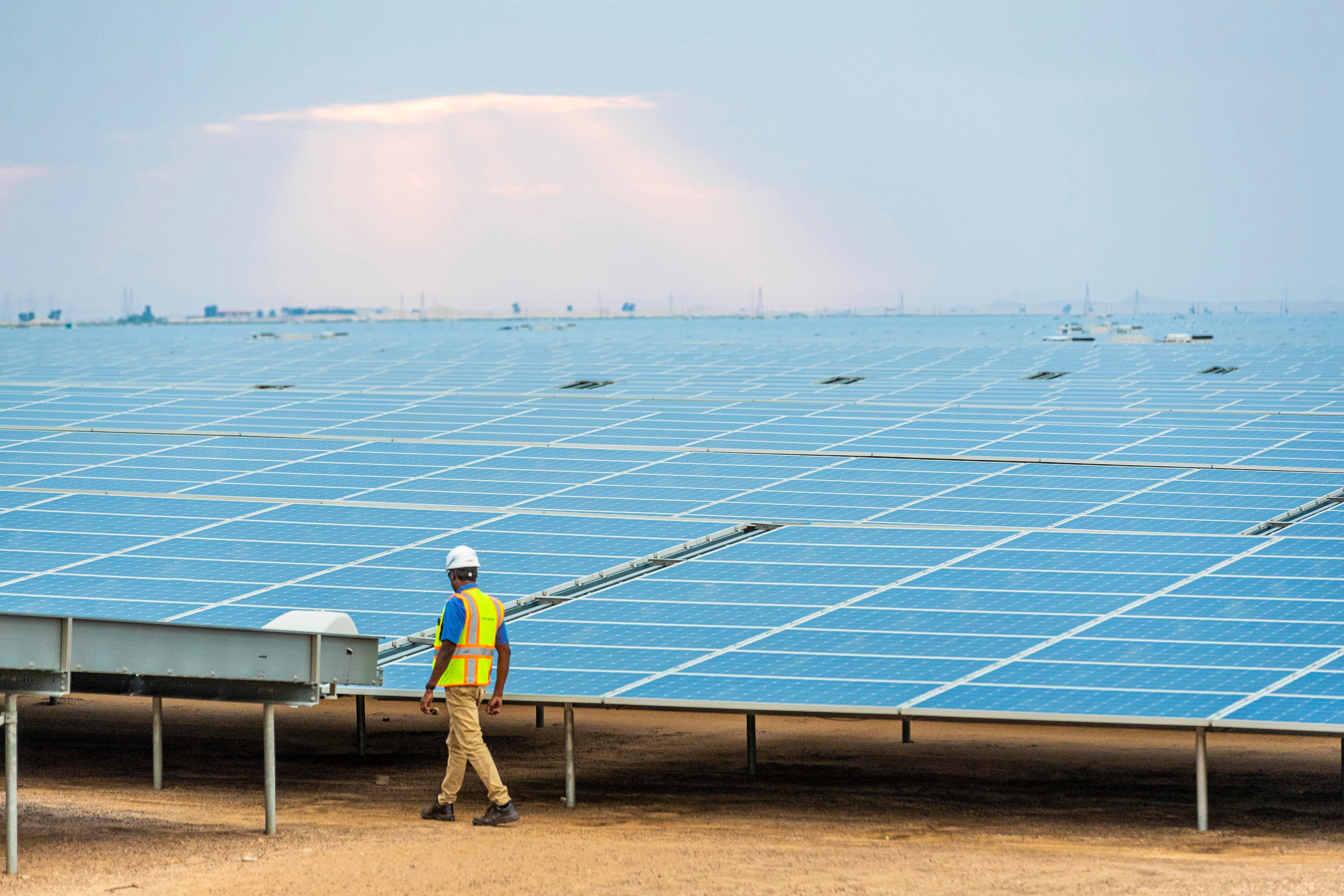
The electricity storage system is not something new, although not widespread either. However, with the advent of intermittent solar and wind power systems, the electrical storage is being seen in a new context.
Pumped hydro has been a classical system. Battery storage is a new addition. Open-cycle gas turbines and diesel engines, being expensive and inefficient, are being replaced by storage systems.
In this space, we will explain the use of two systems and their economics and policy issues.
The main driver of storage systems is the emergence of solar and wind power as a mainstream power source. There are projections of 50-100% market share of renewable energy by 2050 or beyond.
Most recent storages have been installed near solar or wind power plants to handle intermittency.
Pumped storage hydro
Pumped storage hydro (PSH) is an old technology used for load balancing. Water is pumped up either through reversible turbines or independent water pumps to a higher site reservoir or a dam. When needed, the stored water is allowed to flow through the hydro turbine to produce electricity.
PSH is not a new energy producer. It provides energy when needed, especially, during peak hours when energy is priced higher, balancing the energy loss.
There is a renewed interest in PSH due to the advent of intermittent and variable solar and wind energy, although there are other competing technologies like battery storages.
The disadvantage of PSH is that it can only be installed in usually remote hilly or mountainous areas, while battery storage can be installed anywhere and in all capacities in the modular and containerised form.
There are a number of pumped storage technologies that have been developed in the meantime. Smaller-capacity pumped storage plants of 5-100 megawatts are being built as opposed to very large plants of 500-2,000MW that were built earlier.
Where hilly areas are near sea, hill-sea pumped storage plants are built wherein sea is used as an open lower reservoir. Seawater is pumped to the upper reservoir made on the hill and passed through turbines to produce electricity.
Patented pumped storage applications have been developed, which utilise a special fluid (R-19), which is 2-2.5 times denser. This reduces the height requirement for the same capacity. This will enable the installation of hundreds of such plants in mid-country to the south. Another application combines desalination with pumped storage.
PSH accounts for over 95% of all storage installations worldwide, with a total installed nameplate capacity of over 184 gigawatts (GW). It is expected to be doubled as renewable energy penetration increases.
High PSH users are only a few countries. In Austria 18.7%, Switzerland 32.6%, Portugal 17.8% and Japan 8.8% of hydro capacity is installed and utilised.
In other countries, PSH installations are 2-5% of the installed hydro capacity. India has several large pumped storage plants and a number of new ones are also being built.
A 250MW pumped storage is under construction in the UAE. Hatta Dam is being used as a lower reservoir and an upper reservoir is being built at a higher altitude of 150 metres.
The plant will provide storage for 7.5 hours and 1,500MWh. Capital expenditure (capex) on the plant is estimated at $387 million. The UAE is in need of electricity storage due to large installations of solar power plants.
Battery storage
One is familiar with lead acid batteries used in automotives for starting purposes. These are, however, of less than 1 kilowatt-hour (kWh) and are of 12-24 volts.
Electric vehicle (EV) batteries have come up, which replace fuel and are of 100-300kWh capacities. Batteries are lead acid and now Li-Ion. New technologies are creeping in fast.
Costs are high but are fast reducing – from $1,000 per kWh in 2010 to $230 in 2016 and expected to drop to $100 shortly.
Half of the price of EVs today constitutes battery costs. EV batteries have a requirement of low weight and volume, which is not there in grid storage.
Utility grid storage battery
Li-Ion batteries have been used and are in current use as well, typically, in smaller capacity applications. I-Ion and Redox batteries are competitors.
Unit costs may ultimately decide the fate of competition. Costs of both are coming down fast with no surety as to who will win ultimately. Li-Ion will remain a winner in EVs and Redox may win in grid-scale applications.
However, Flow batteries are increasingly becoming more popular for a variety of reasons including the cost and characteristics. I-Ion batteries degrade in frequent charge and discharge situations and are less cost efficient in four-hour plus storage times.
Battery Electrical Storage (BES) is expensive comparatively and destined to become cheaper on the style of solar panels. BES and pumped storage have already become competitive as is indicated by the results of a recent tender in India.
The main advantage of BES is that it is not location or site-specific. It can be installed anywhere where grid is available and thus would be a great tool for distributed generation, while pumped storage requires a hilly or mountainous area.
Storage and hybrid policy
The Indicative Generation Capacity Expansion Plan (IGCEP 2030) has been approved recently. Yet, it provides for open-cycle gas-powered plants for peaking and load balancing purposes.
More than 30,000MW of renewable capacities (including hydro) are being projected by 2030. It will definitely require battery storage and also pumped storage.
A policy is also required for hybrid solar and wind energy, which has relevance with storage. Balochistan is in great need of a distributed energy system, which may require hybridisation and storage as well.
It has both solar and wind resources widely dispersed throughout western regions of the province. There is already wind power curtailing in Sindh.
With the increase in solar and wind capacity, grid stability issues will emerge. It will be appropriate if Nepra, CPPA-G, PPIB and AEDB put their acts together and do planning for adequate storage systems and capacity.
Some proposal or project should have been included for storage and battery alternatives – pumped storage and the evolving BES technology, especially Li-Ion – in the IGCEP.
In the absence of such innovative technologies, there is a risk of high grid instability and even unnecessarily higher capital expenses.
The writer is former member energy of the Planning Commission and author of several books on the energy sector
Published in The Express Tribune, November 1st, 2021.
Like Business on Facebook, follow @TribuneBiz on Twitter to stay informed and join in the conversation.





1730464033-0/BeFunky-collage-(12)1730464033-0-165x106.webp)












COMMENTS (1)
Comments are moderated and generally will be posted if they are on-topic and not abusive.
For more information, please see our Comments FAQ